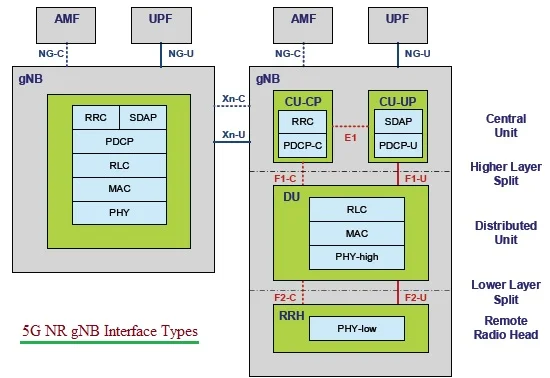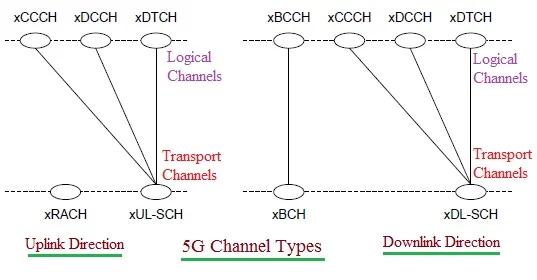5G tutorial | 5G system basics tutorial
This page of tutorials section covers 5G tutorial basics which mentions need for 5G wireless, 5G technology features, advantages of 5G and key 5G projects.
As we know we can not live without modern wireless technologies. This makes our life cosy and easy. The world has compressed due to advent of wireless technologies. Both indoor and outdoor wireless technologies are evolving very rapidly.
2G, 3G and 4G cellular wireless technologies have been mass deployed throughout the world. Moreover personal area network based technologies such as wifi, bluetooth and zigbee have become predominant in our daily life.
5G is the short form of 5th Generation. It is used to designate fifth generation of mobile technologies. 5G has made it possible to use mobile phone with larger bandwidth possible. It is a packet switched wireless system. It is used to cover wide area and used to provide higher throughput. It uses CDMA, BDMA and also millimeter wave(for backhaul wireless connectivity). It uses improved and advanced data coding/modulation techniques. It provides about 100 Mbps at full mobility and 1 Gbps at low mobility. It uses smart antenna techniques to support higher data rate and coverage. Refer 2G vs 3G, 3G vs 4G, and 4G vs 5G.

Refer 5G network architecture➤ more more description of 5G network.
5G technology features or advantages
The 5G technology makes use of all the existing cellular wireless technologies(2G, 3G and 4G).
Apart from high throughput it provides following
featutes to the users and providers of this technology.
• Better revenue for the service providers.
• Interoperability will become feasible and easier.
• Low battery power consumption.
• Better coverage and high data rates at the edge of cell.
• Multiple data transfer paths concurrently.
• More secure
• Flexible architecture based on SDR(Software Defined Radio).
• Higher system spectral efficiency
• Harmless to human health
• Cheaper fees due to lower costs of deployment infrastructure
• Better QoS(Quality of Service)
• Ultimate download and upload speed provides user great experience like broadband cable internet
• Most of the devices such as 5G dongle works on USB power and hence better
in developing countries where electric power cuts are very common.
| Specification / Feature | 5G Support |
|---|---|
| Bandwidth | 1Gbps or higher |
| Frequency range | 3 to 300 GHz |
| Standard(access technologies) | CDMA/BDMA |
| Technologies | Unified IP, seamless integration of broadband, LAN/PAN/WAN/WLAN and 5G based technologies |
| Applications/Services | wearable devices, dynamic information access, HD streaming, smooth global roaming |
| core network | flatter IP network, 5G network interfacing (5G-NI) |
| Handoff | vertical, horizontal |
| Peak Data Rate | Approx. 10 Gbps |
| Cell Edge Data Rate | 100 Mbps |
| Latency | less than 1 ms |
5G NR (New Radio) architecture

5G NR overall architecture is shown in the following figure-2. This is as defined in the 3GPP TS 38.300 specification. Refer 5G network architecture >>
5G NR Network Interfaces

Refer 5G NR network interfaces which include Xn interface, NG interface, E1 interface, F1 interface and F2 interface. Refer 5G NR interfaces >>.
5G Channel Types

5G channel types cover logical channels and transport channels used in uplink and downlink with mapping between them. The 5G logical channels include xBCCH, xCCCH, xDCCH, xDTCH etc. The 5G transport channels include xBCH, xDL-SCH, xRACH, xUL-SCH etc. Refer 5G Channel Types >>.
5G Protocol Stack

The 5G layer-1 is PHYSICAL Layer. The 5G layer-2 include MAC, RLC and PDCP.The 5G layer-3 is RRC layer as shown in 5G protocol stack. Refer 5G protocol layer functions >>.
Key research projects based on 5G
Various projects based on 5G are in progress and are administered and managed by 5G-PPP. The projects include 5G-NORMA, 5G-ENSURE, CHARISMA, COGNET, XHAUL, mmMAGIC, SPEED-5G, Flex5Gware, FANTASTIC 5G etc.
5G-PPP is the short form of 5G Infrastructure Public Private Partnership. It has been initiated by EU commission, manufacturers, operators, researchers and SMEs. The 5G-PPP will provide next generation solutions, technologies, standards, architectures to be used for telecommunications.
5G NR Physical layer processing for PDSCH and PUSCH

This article describes 5G NR physical layer. The physical layer processing for 5G NR PDSCH channel and 5G NR PUSCH channel have been covered stepwise. This 5G physical layer description is as per 3GPP physical layer specifications. Refer 5G NR PHY >>.
5G NR MAC Layer Overview

This page describes overview of 5G NR MAC layer. It covers 5G NR MAC functions, 5G NR MAC architecture, 5G NR MAC channel mapping, 5G NR MAC procedures and format of 5G NR MAC header and subheaders. Refer 5G NR MAC Layer >>.
5G NR RLC Layer Overview

This page describes overview of 5G NR RLC layer including functions. It covers 5G NR RLC modes (TM mode,UM mode, AM mode),data structures (TMD, UMD, AMD),RLC PDUs (TMD PDU, UMD PDU, AMD PDU), data transfers (TM, UM and AM) and RRC parameters which defines RLC layer. Refer 5G NR RLC Layer >>.
5G NR PDCP Layer Overview

This page describes overview of 5G NR PDCP layer including functions. It covers PDCP architecture (structure, entities), PDCP procedures for data transfer during transmit/receive operation, Data PDU and Control PDU formats of PDCP layer etc. Refer 5G NR PDCP Layer >>.
5G NR Numerology | 5G NR Terminology
5G NR Control channels | 5G NR Traffic Channels | 5G NR Reference Signals and sequences
5G NR Calculators
5G NR Throughput calculator
5G NR TBS calculation
5G NR ARFCN vs frequency conversion
5G TECHNOLOGY RELATED LINKS
5G basic tutorial
5G Frequency Bands
5G millimeter wave tutorial
5G mm wave frame
5G millimeter wave channel sounding
Difference between 4G and 5G
5G testing and test equipments
5G network architecture
5G NR Physical layer
5G NR MAC layer
5G NR RLC layer
5G NR PDCP layer
